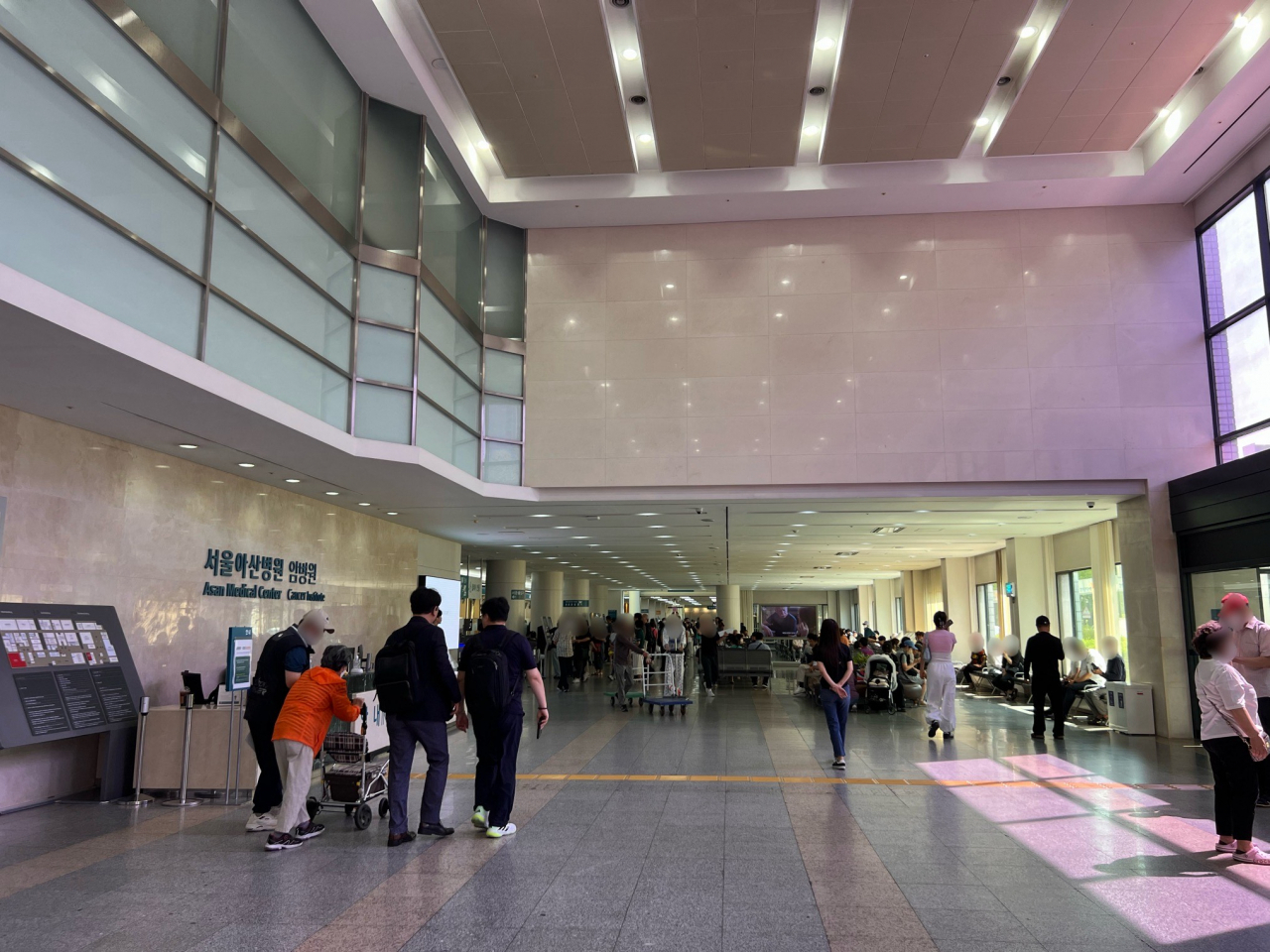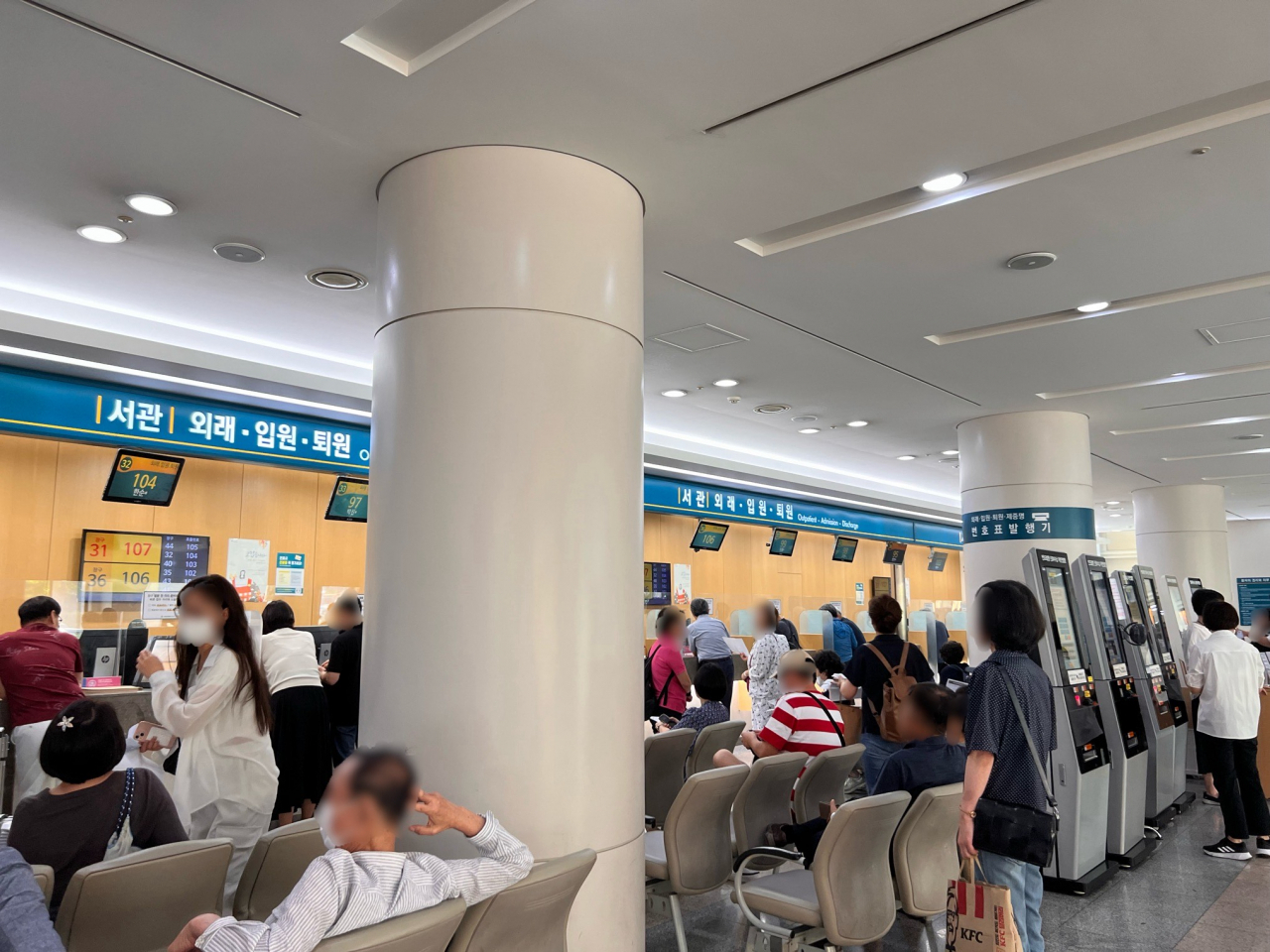Korea’s largest doctors’ group begins full-scale strike despite warnings
Doctors from across the nation participate in a rally at Yeouido Hangang Park, western Seoul, Tuesday, to protest against the government’s decision to drastically raise the medical school enrollment quota. (Yonhap)
The largest coalition of neighborhood doctors in South Korea launched a full-scale, one-day strike on Tuesday, with some members suspending medical services despite the government’s return-to-work order and threat to disband the organization.
The Korean Medical Association, representing some 140,000 doctors, mostly self-employed, pleaded to the public that it was the “last chance” to salvage the nation’s health care from the brink of collapse.
“The government has ignored efforts made by the medical community for the past four months. The only way to stop the government’s tyranny is through collective action, and we would like to ask for the public’s understanding,” the KMA said in a statement.
The KMA estimated that the walkout would be the biggest since 2000, when doctors protested the government’s policy of separating the prescription and dispensing of drugs at the time, as 90.6 percent of its members, including private practitioners and medical professors, were in favor of the strike in a recent vote on staging the walkout.
To minimize the impact of a potential medical vacuum, the government ordered striking community doctors to return to work at 9 a.m., as some 4.02 percent of the nation’s 36,371 private hospitals had reported to authorities their intention to take the day off. Each local government is to monitor whether community doctors under its jurisdiction go on strike, according to the Health Ministry.
President Yoon Suk Yeol condemned medical professionals, saying that their actions could threaten patients’ lives and health, as he urged them to engage in dialogue led by the presidential medical reform panel.
“Many people including patients’ groups and people from all walks of life are asking the medical circle to stop taking collective actions,” Yoon said in a Cabinet meeting in his office in Seoul on Tuesday.

Patients and their guardians are seen at the Asan Medical Center in Songpa-gu, southern Seoul, Tuesday. (Park Jun-hee/The Korea Herald)
“Now that the government is bound to protect people’s right to health, any illegal actions neglecting patients must be taken seriously.”
Ordinary people will fall victim to the medical professionals’ walkout, Yoon added, if the medical circle sticks to its claims without the consent of the people.
If the closure rate of local clinics exceeds 30 percent, the government will conduct on-site inspections and gather evidence to take administrative measures such as suspending medical licenses and practices in accordance with the law. University hospitals, however, will not be subject to illegal refusal to provide medical treatment since they remain open.
“The only way to resolve an issue is through engaging in constructive dialogue and rational discussions rather than engaging in actions that threaten the lives of patients,” Health Minister Cho Kyoo-hong said in a government response meeting.
Cho noted that the government will seek to persuade the medical circle to end its collective refusal of treatment until the very end, and handle illegal acts sternly, warning that doctors would face legal punishments if they do not comply.
He also said the government has requested police investigations into social media posts encouraging participation in illegal collective action and refusing to provide medical services under the guise of voluntary participation.
In a separate briefing, Jun Byung-wang, a policy chief at the Health Ministry, urged doctors to abide by their obligations to provide care to patients. “People’s right to life is the most basic, fundamental right that must be protected under any circumstances,” he told reporters.
Amid growing dispute, Jun also warned the KMA could face dissolution if it continues to engage in actions that go against the purpose of its establishment, which is to promote public health and welfare and advance medicine.

Patients and their guardians are seen at the Asan Medical Center in Songpa-gu, southern Seoul, Tuesday. (Park Jun-hee/The Korea Herald)
In addition, an association of patient groups with severe diseases demanded that the government respond strictly to doctors who go against the Hippocratic oath by engaging in illegal activities.
“The government’s lukewarm response has exacerbated the current situation. It should now fairly enforce the law on doctors and proceed with administrative action, such as by revoking their licenses,” it said in a statement.
Despite fear among patients, no major disruptions to health services were reported.
A senior official at Seoul St. Mary’s Hospital, one of the nation’s top institutions, told The Korea Herald that less than 10 percent of doctors there have walked out. Another official at Asan Medical Center in Seoul said many professors who have decided to strike are still seeing patients.
No Byline Policy
Editorial Guidelines
Corrections Policy
Source